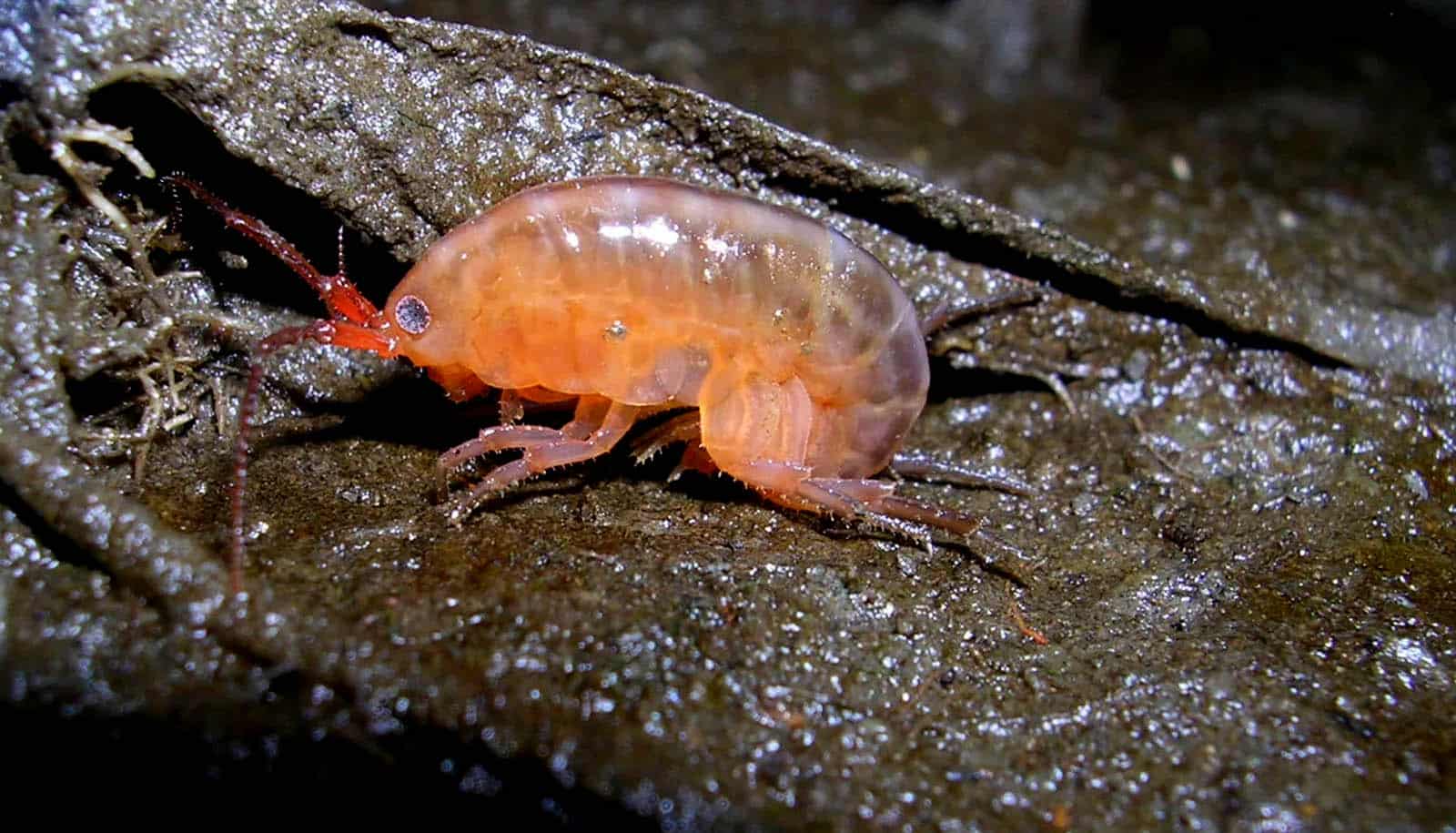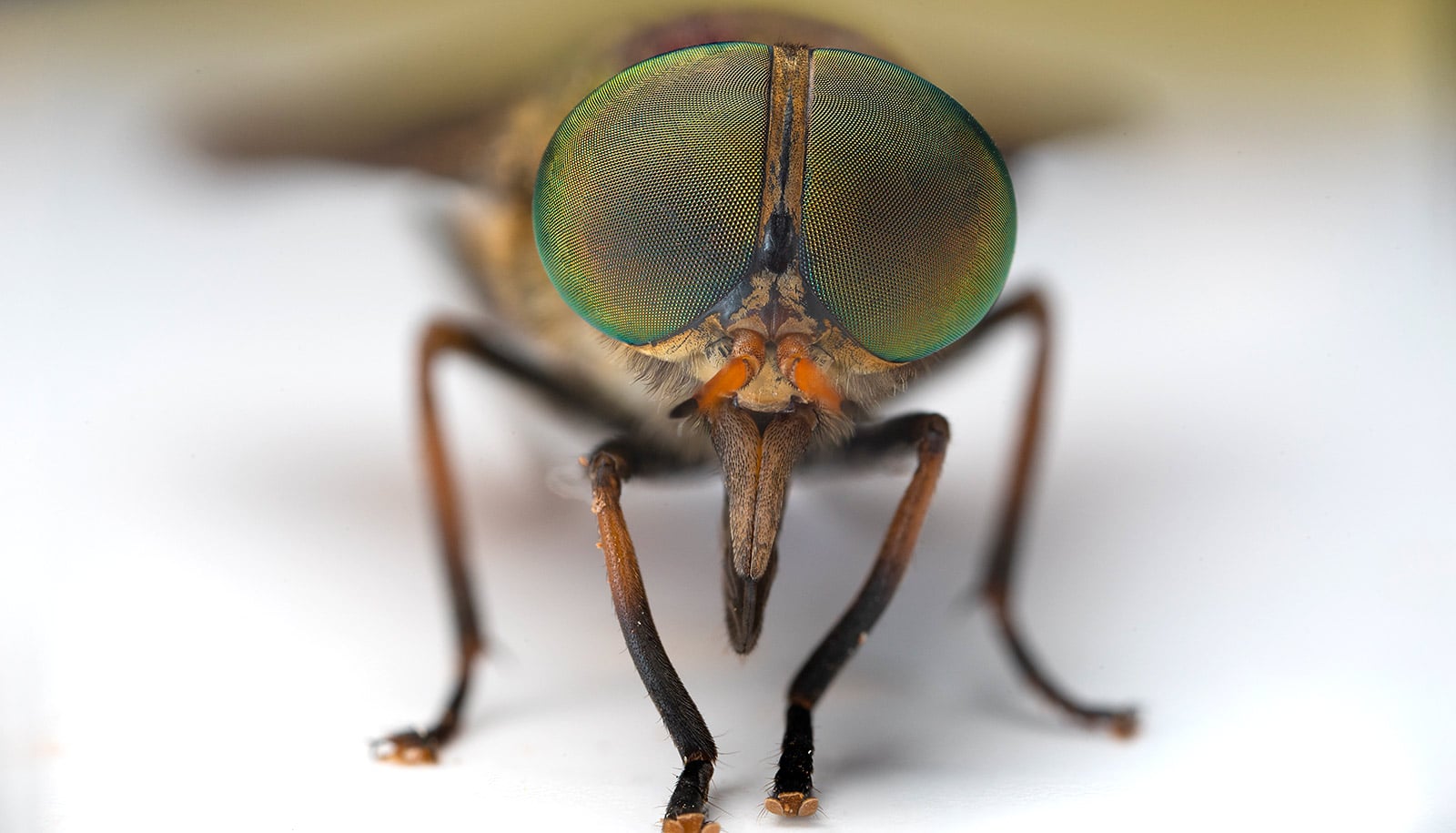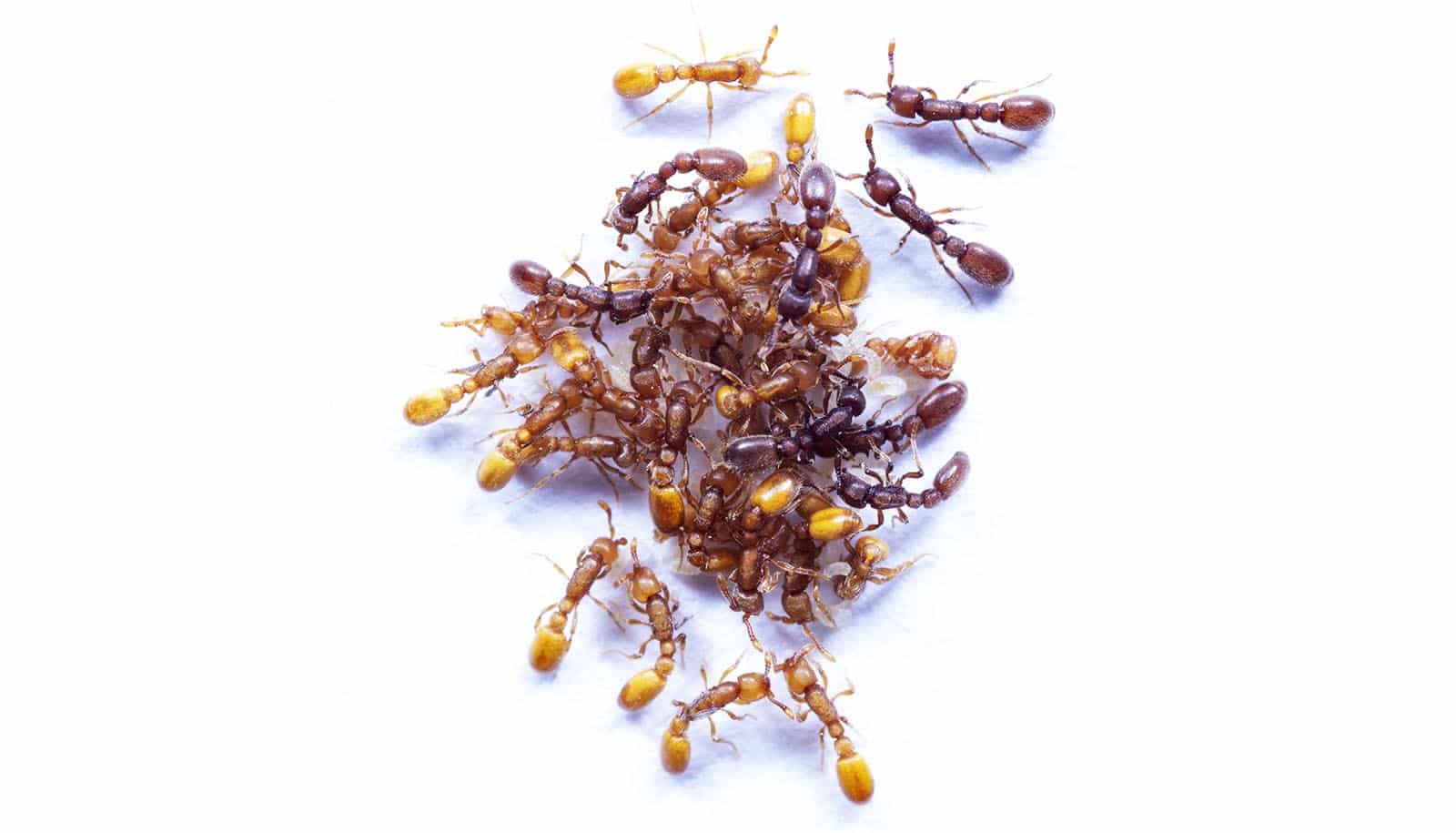A new study reveals what’s happening when parasites turn tiny crustaceans called amphipods into neon zombies.
Salt marshes are home to tiny crustaceans called amphipods that keep a low profile: Their gray-brown coloring helps them blend in with their surroundings, and they spend most of their time hiding under vegetation. But when amphipods are infected with a parasitic worm called a trematode, they turn bright orange and lose their tendency to run for cover when exposed. This bizarre behavior makes them stand out to predators—as well to scientists.
Biologists at Brown University have been studying amphipods for roughly a decade. The project started as a training exercise for students in collaboration with the Marine Biological Laboratory research institution. Over time, with advancements in molecular genetics, computational tools, and biomedical technology, faculty and student scientists have made unexpected discoveries about the relationship between amphipods and the parasitic worms that prey upon them.
In a new study published in Molecular Ecology, researchers provide a detailed analysis of the molecular mechanisms that allow the parasites to manipulate their hosts, and explain what’s happening to the amphipod’s biology that causes it to respond to the parasite in such distinct ways.
“Characterizing the molecular mechanisms of manipulation is important to advancing understanding of host-parasite coevolution,” says study author David Rand, a professor of natural history and chair of the ecology, evolution, and organismal biology department.
The relevance of the findings extends far beyond the salt marsh, Rand says, especially when considered in context of certain pathogens that infect humans.
While foodborne trematodes can make humans very sick, they don’t have the same type of “zombie” effect. The amphipod system is closer to a malaria example, Rand notes, where the plasmodium parasite is carried by a mosquito that serves as an intermediate host. Studies have shown that mosquitos carrying the parasite can be more attracted to humans than to uninflected mosquitoes.
“This may be an example of a parasite manipulating an intermediate host to ensure its own transmission between hosts,” Rand says. “Rabies could be another relevant example: it drives infected individuals ‘mad’ so they bite others and infect the next host. Learning the molecular mechanisms of these kinds of host-parasite interactions can have important implications for how to manage pathogens generally, and in humans.”
The trematode worm’s interaction with the amphipods makes Darwinian sense, Rand says: Parasites manipulate hosts to ensure their transmission so they can continue to reproduce. They’re an example of “prudent parasites” that don’t kill their hosts right away or ever, giving the parasites time to reproduce or move to another host.
The type of “zombie” manipulation seen in the amphipods isn’t unheard of in the natural world. However, Rand says, less has been known about the precise ways that parasitic worms have been able to cause changes in the amphipods that affect behavior, appearance, and immune function.
In the new study, the scientists used RNA sequencing to identify genes whose function match the three big changes in the host’s traits. They discovered that trematode infection results in activation of amphipod gene transcripts associated with pigmentation and detection of external stimuli, and suppression of multiple amphipod gene transcripts implicated in immune responses.
The researchers hypothesized that suppression of immune genes and the altered expression of genes associated with coloration and behavior may allow the parasite to persist in the amphipod and engage in further biochemical manipulation that promotes transmission.
“Infected amphipods become sitting ducks for predators,” Rand says. “That allows the parasites to spread into a newer, bigger, more robust host organism, and continue to reproduce and propagate their species.”
In the paper, researchers conclude that the genomic tools and transcriptomic analyses they reported provide new opportunities to discover how parasites are able to alter the diverse molecular pathways that underlie or determine changes in their hosts.
This type of study is illustrative of how far biological research has come, Rand says.
“We’re not curing human diseases out there in the salt marsh,” Rand says. “But compared to how ecologists of the past would be limited to looking for answers to nature’s mysteries by sifting through the mud, we now have access to molecular, biomedical, and computational resources to find answers to questions, and we can then apply those findings to different areas of science that previously wouldn’t have seemed as connected.”
Additional key contributors are from the Virginia Institute of Marine Science at William & Mary, and from the Marine Biological Laboratory.
Support for the work came from the National Science Foundation IGERT award in Reverse Ecology; NSF support for the Plum Island Ecosystems Long-Term Ecological Research site; and other awards from the National Institutes of Health.
Source: Brown University



